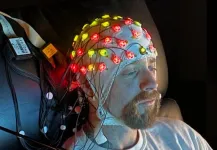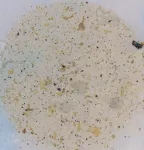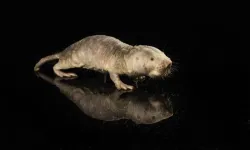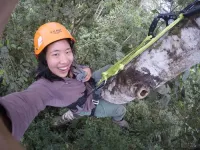(Press-News.org) Picture this scenario: You and a friend are walking around your neighborhood when you stop at a crosswalk. As you wait, the noises of the world and your internal thoughts all vie for your attention. Suddenly, you see a motorist nearly hit a bicyclist.
“Whoa, did you see that?” you say to your friend.
“I sure did; that was a fully restored 1967 Ford Mustang,” your friend replies, referring to a car separate from the near-traffic collision.
Despite being in the same place at the same time, and looking at the same scene, you and your friend paid attention to different things.
Why? And how?
One possibility is that different things in the environment attracted your attention differently. But another possibility is that you and your friend made voluntary decisions about what to pay attention to, exerting your free will accordingly.
Funded by a three-year $900,000 grant from the National Science Foundation, Distinguished Professor George R. Mangun, director of the UC Davis Center for Mind and Brain, is launching a project to better understand the cognitive mechanisms behind realistic voluntary attention, or attention directed by an individual’s free will. The project will be conducted in collaboration with engineering colleagues at the University of Florida.
“How we use free will to focus attention influences our momentary awareness and our consciousness.” — Mangun
The role of voluntary attention isn’t just important to understanding healthy brain function, he said. It’s also critical to understanding disorders of the brain.
“Almost every neurological or psychiatric disorder touches some component of attention, and this sometimes involves deficits in free will, such as in Parkinson’s disease,” he said.
Free will without the ‘free’
For decades, neuroscientists have probed the cognitive and neural mechanisms behind voluntary attention by using external cues (simple stimuli such as arrows) to direct their research subjects’ attention to specific locations in front of them. But this is a far cry from how human voluntary attention naturally occurs.
In the real world, our free will enables us to control what we pay attention to, even in the face of potential distractions. To accommodate for this reality, neuroscientists often investigate the concept of free will through voluntary motor actions, asking study participants to push a button of their own volition without prompting from a researcher.
Mangun’s project will bring these two lines of research together. Because orienting attention is a cognitive act and not a motor one, the researchers hope to take an important step forward in understanding both free will and voluntary attention.
Measuring true ‘free will’
Mangun’s project will build upon previous experiments his lab conducted analyzing the neural activity that precedes voluntary decision-making.
In a study published in the Journal of Cognitive Neuroscience in 2014, Mangun and his colleagues recount experiments in which they asked participants to look at a spot in the center of a computer screen. They then prompted the participants to focus attention somewhere else on the screen using free will to choose where but doing so without moving their eyes to look at the attended location directly.
By making this request, the researchers separated the cognitive act of attending from the motor act of moving the eyes to look. Mangun and his colleagues recorded the participants’ brain waves (electroencephalography or EEG signals), both before and after they used free will to focus attention.
“It turns out that the ongoing pattern of brain activity preceding the subject’s free will choices could predict where they were going to later focus their attention,” Mangun said. “Using neuroscience methods, we were able to do a sort of mind reading.”
Improving prosthetics and diversifying research
Mangun’s new NSF grant takes the next step forward by applying machine learning approaches and advanced brain imaging methods to pinpoint the precise neural underpinnings of these predictive brain signals. The highly interdisciplinary project brings together engineers such as postdoctoral scholar Sreenivasan Meyyappan and psychology doctoral candidate John Nadra.
Probing and refining the cognitive mechanisms behind voluntary attention could help improve technological interventions, like prosthetics. Currently, many prosthetics harness peripheral information like muscle activity. This new research could shift those signals from the muscle to the brain itself.
“You can train a person to use a mechanical arm by tapping into the electrical activity of the shoulder muscles and then they learn to contract those muscles to drive that mechanical arm,” said Mangun. “But in addition, one can use the brain’s electrical activity, for example in the motor cortex, directly to do the same. Our research may open doors to tapping into brain signals even earlier in the chain of neural events.”
In addition to its potential broad impacts on health and wellness, the project will open doors to students interested in conducting neuroscience research.
In the grant application, Mangun noted that the project will help advance and diversify STEM education by involving undergraduates, graduates and postdoctoral scholars, recruiting students through the UC Davis Summer Undergraduate Research Program and the Young Scholars Program.
“One of the great benefits of studying at a research-intensive university like UC Davis is the possibility for students to participate in cutting-edge research — it’s part of who we are,” he said.
END
Researchers to probe brain mechanisms behind free will
UC Davis Center for Mind and Brain researchers to look at voluntary mechanisms
2023-08-24
ELSE PRESS RELEASES FROM THIS DATE:
Blink and you'll miss these plants shooting their seeds
2023-08-24
DURHAM, N.C. -- If you happened upon a witch hazel plant in the forest, you might describe it as a sweet-smelling shrub with crinkly ribbon-like petals. But to Duke University graduate student Justin Jorge, it’s a howitzer.
That’s because of the impressive firepower of its fruits.
When witch hazels are ready to disperse their seeds, their woody seed capsules split open. Pressure builds up, and eventually the seeds shoot out like bullets fired from a rifle, hitting 30 feet per second in about half a millisecond.
“If you blink you’ll miss it,” said Jorge, who worked on this project as part of his Ph.D. thesis in biomechanics with senior author ...
Could microplastics in soil introduce drug-resistant superbugs to the food supply?
2023-08-24
URBANA, Ill. — Like every industry, modern farming relies heavily on plastics. Think plastic mulch lining vegetable beds, PVC pipes draining water from fields, polyethylene covering high tunnels, and plastic seed, fertilizer, and herbicide packaging, to name a few. In a new review article, University of Illinois Urbana-Champaign researchers say these plastics are now widely dispersed in agricultural soils in the form of microplastics and nanoplastics.
That’s not necessarily new; microplastics have been found in nearly every ...
Heavy drinking, handgun-carrying linked among rural youth
2023-08-24
In the rural United States, an adolescent who drinks heavily has a 43% greater probability of carrying a handgun in the following year, according to a study published this month in The Journal of Rural Health.
“While there has been a lot of research on this correlation in urban areas, little is known about the association between alcohol use, particularly heavy drinking, and handgun carrying in rural areas,” said lead author Alice Ellyson, an acting assistant professor of pediatrics at the University of Washington School of Medicine and investigator in UW Medicine's Firearm Injury & Policy Research Program.
“Our study ...
Longevity gene from naked mole rats extends lifespan of mice
2023-08-23
In a groundbreaking endeavor, researchers at the University of Rochester have successfully transferred a longevity gene from naked mole rats to mice, resulting in improved health and an extension of the mouse’s lifespan.
Naked mole rats, known for their long lifespans and exceptional resistance to age-related diseases, have long captured the attention of the scientific community. By introducing a specific gene responsible for enhanced cellular repair and protection into mice, the Rochester researchers have opened exciting possibilities for unlocking the secrets of aging and extending human lifespan.
“Our study provides a proof of principle ...
Ice-free preservation method holds promise to protect reefs
2023-08-23
As ocean temperatures rise, coral reefs face increasing threats as ecosystem damage has accelerated in recent decades. The ability to preserve and revive biodiverse coral samples has become an essential priority for the health and future of the world’s oceans.
A Texas A&M University-led interdisciplinary team of researchers demonstrated that live coral can be preserved through a new technique called “isochoric vitrification.” This process takes selected coral fragments through the stages of cryopreservation, ...
Editorial: A macrophage is a macrophage is a macrophage—in metastasis
2023-08-23
“We hope that these results will inform future attempts at anti-macrophage therapy and lead to better outcomes for patients in the not-too-distant future.”
BUFFALO, NY- August 23, 2023 – A new editorial paper was published in Oncotarget's Volume 14 on June 6, 2023, entitled, “A macrophage is a macrophage is a macrophage—in metastasis.”
In this new editorial, researcher Thomas T. Tapmeier from Monash University, Hudson Institute of Medical Research and University of Oxford discusses a recent study he co-authored on how lung macrophages evolve during metastatic growth of lung colonies in a mouse model of melanoma. Macrophages have important roles ...
Deforestation limits nesting habitat for cavity-nesting birds
2023-08-23
With an extendable pole fitted with a small camera, Alison Ke could get a clear view of the inside of a nest box, including one time when a small, green Pacific parrotlet laid eggs. Ke, who earned a Ph.D. in ecology from UC Davis, led a research project to find out how converting rainforest to farmland affects the habitat of birds who rely on tree holes, or cavities, for nesting.
Ke worked closely with local scientists and community members to study birds around the Mache-Chindul Ecological Reserve, an area in northwest Ecuador that has experienced rapid deforestation and agricultural expansion in the past 50 years. Their study, ...
Brain lesions associated with memory loss in multiple sclerosis linked to common brain circuit
2023-08-23
Between 30 to 50 percent of people living with multiple sclerosis (MS) will experience memory problems but the cause is uncertain. Brain lesions are the hallmark imaging sign used to diagnose MS and are often associated with memory dysfunction. However, increased MS brain lesions are not specific to memory problems and are also associated with fatigue, walking difficulty and other common MS symptoms. Previous studies that attempted to align the anatomy of lesions associated with memory problems in MS led to conflicting ...
2024 Hertz Fellowship application now open
2023-08-23
The Fannie and John Hertz Foundation, an organization dedicated to empowering the nation’s most promising innovators in science and technology, announced today that it is accepting applications for the 2024 Hertz Fellowship awards.
The Hertz Foundation has been granting fellowships to empower the nation’s most promising young minds in science and technology since 1963. Hertz Fellows receive five years of funding, which offers flexibility and freedom from the traditional constraints of graduate training and the independence needed to pursue research to advance our ...
Mayo researchers find vaccine may reduce severity of long-haul COVID symptoms
2023-08-23
ROCHESTER, Minn. — Getting a COVID-19 vaccine may not only reduce a person's risk of getting long-haul COVID, but also could mean fewer symptoms for people who develop the condition.
Mayo Clinic researchers discovered that long-haul COVID patients who were vaccinated before contracting the virus were less likely to experience symptoms such as abdominal pain, chest pain, dizziness, and shortness of breath, according to a study published in the Journal of Investigative Medicine. The study is believed to be among the first to examine COVID-19 vaccines' potential to reduce ...
LAST 30 PRESS RELEASES:
Theory-breaking extremely fast-growing black hole
ŌURA and National University of Singapore open Joint Lab to advance research in personalized preventive health
Hope for smarter lung cancer care
Singapore scientists discover lung cancer's "bodyguard system" - and how to disarm it
Bacteria use wrapping flagella to tunnel through microscopic passages
New critique prompts correction of high-profile Yellowstone aspen study, highlighting challenges in measuring ecosystem response to wolf reintroduction
Stroke survivors miss critical treatment, face greater disability due to systemic transfer delays
Delayed stroke care linked to increased disability risk
Long term use of anti-acid drugs may not increase stomach cancer risk
Non-monetary 'honor-based' incentives linked to increased blood donations
Natural ovulation as effective as hormones before IVF embryo transfer
Major clinical trial provides definitive evidence of impacts of steroid treatment on severe brain infection
Low vitamin D levels shown to raise risk of hospitalization with potentially fatal respiratory tract infections by 33%
Diagnoses of major conditions failing to recover since the pandemic
Scientists solve 66 million-year-old mystery of how Earth’s greenhouse age ended
Red light therapy shows promise for protecting football players’ brains
Trees — not grass and other greenery — associated with lower heart disease risk in cities
Chemical Insights scientist receives Achievement Award from the Society of Toxicology
Breakthrough organic crystalline material repairs itself in extreme cold temperatures, unlocking new possibilities for space and deep-sea technologies
Scientists discover novel immune ‘traffic controller’ hijacked by virus
When tropical oceans were oxygen oases
Positive interactions dominate among marine microbes, six-year study reveals
Safeguarding the Winter Olympics-Paralympics against climate change
Most would recommend RSV immunizations for older and pregnant people
Donated blood has a shelf life. A new test tracks how it's aging
Stroke during pregnancy, postpartum associated with more illness, job status later
American Meteorological Society announces new executive director
People with “binge-watching addiction” are more likely to be lonely
Wild potato follows a path to domestication in the American Southwest
General climate advocacy ad campaign received more public engagement compared to more-tailored ad campaign promoting sustainable fashion
[Press-News.org] Researchers to probe brain mechanisms behind free willUC Davis Center for Mind and Brain researchers to look at voluntary mechanisms





